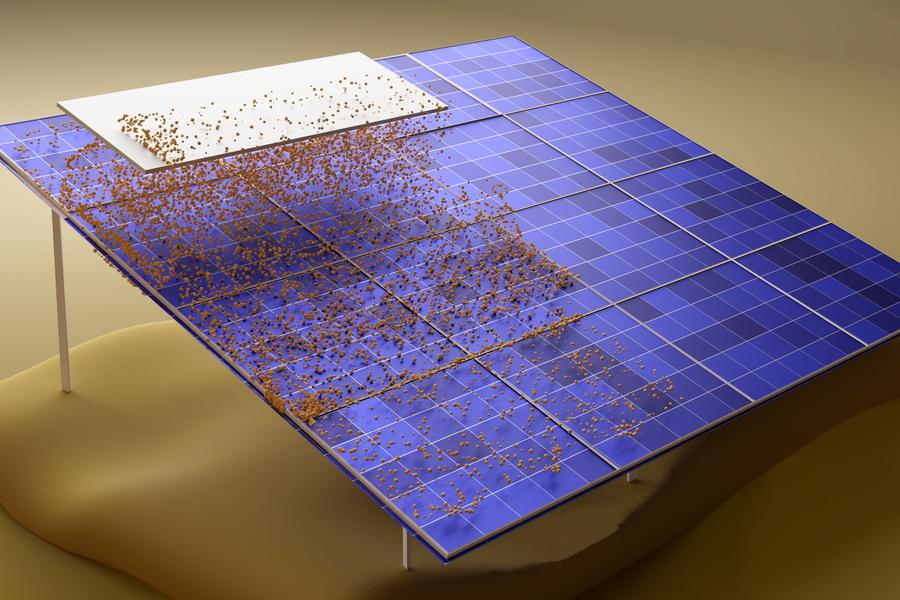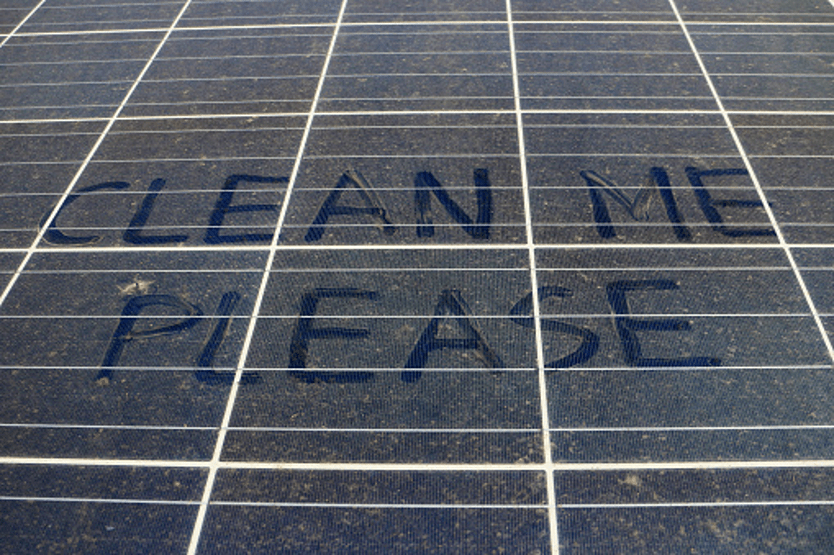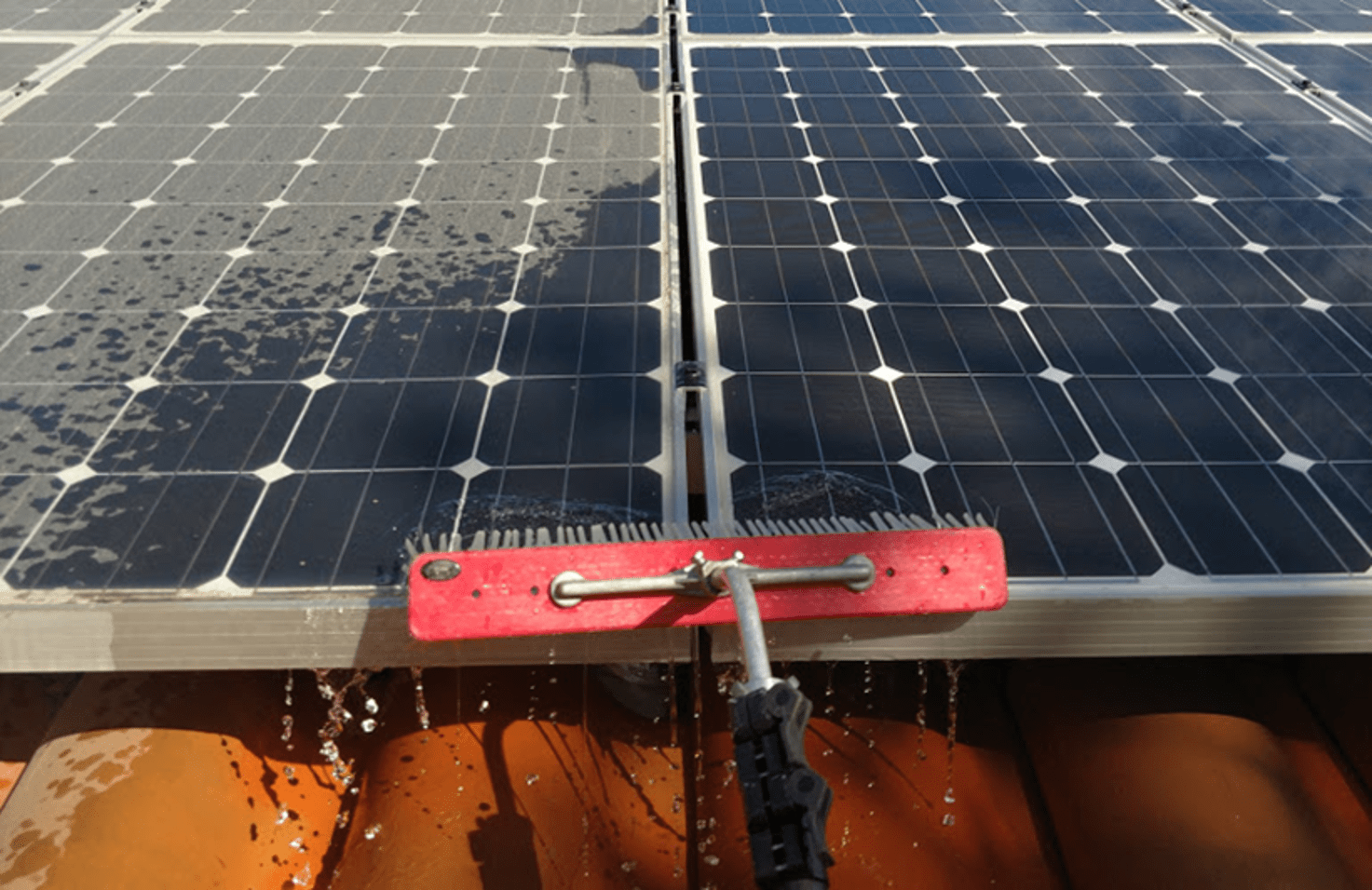The efficiency of a solar energy system’s individual PV panels and the amount of sun exposure that said panels receive play a pivotal role in the system’s over ability to harness solar energy. Keeping the surface of the solar panel clean is critical to achieving optimal efficiency and getting the most out of your system.
The Dust Problem
Spring is a dreadful time of year for many with seasonal allergies, as pollen begins to permeate the air and aggravate sensitive nasal passageways. Pollen, dust, and other particulate are a similar pain for solar panels. The National Renewables Energy Laboratory (NREL) estimates that dust and grime accumulated on a solar panel can lead to 7% energy loss annually in the United States and up to as high as 50% in the excessively dusty Middle East.
This issue can generally be solved after a good rainstorm, but those events are obviously sporadic and unpredictable. Overnight cooling combined with morning dew and surface heating as the day goes on can also lead to a process called cementation where the grime hardens on the panels and is nearly impossible for a regular rain shower to remove.
How Are Solar Panels Typically Cleaned?
Traditional solar panel cleaning methods vary depending on whether we’re talking about a ground-mounted solar array or one affixed to a house, but regardless, the process generally involves water and a brush/sponge/squeegee. The process doesn’t differ meaningfully from washing your own car. Just like washing your car, great care needs to be taken to not scratch the surface glass of the panel as any surface damage can reduce the panel’s efficiency.
The major flaw with this traditional cleaning method is that it requires the use of water. For residential users this results in added cost in the form of higher water bills, but perhaps more importantly, relying on water to clean solar panels is incongruent with the broader sustainability goals of using solar energy in the first place. It is estimated that 10 billion gallons of water is used per year to clean the world’s solar panels. To put that in perspective, that amount of water could satisfy the drinking needs of up to 2 million people. Clearly, the massive water consumption footprint associated with cleaning of solar panels does not represent a long-term solution for the industry.
Solar Panel Cleaning Robots
Establishing a waterless fix to the soiled solar panel conundrum has inspired a burgeoning niche market within the solar industry – solar cleaning robots.
Art Robotics, a fledgling Belgian startup, is one such company involved in the space. The company uses a drone to deliver a small slender robot (named HELIOS) to roof-affixed solar panels which clean the panel surface using vacuuming technology. The contraption is basically a Roomba for your solar panels. The product is pitched as a cleaning service that you would sign up for as needed or in regular intervals.
SolarCleano is one of the more well-known providers of robots for cleaning solar panels, although many of their robots use water. Their SolarCleano B1 robot is one exception. This gigantic solar cleaning system is designed for use on ground-mounted utility scale solar farms. The fully autonomous system consists of a robot on wheels equipped with a large rotating bristle brush that “drives” around cleaning the surface of the solar panels.
While the waterless brush-based robots help to solve the excessive water challenge, there are concerns that over time the constant scrubbing can lead to scaring of the solar panels, which ultimately leads to a reduction in solar efficiency and in useful life.
MIT’s Static Electricity Solution
Existing solutions to cleaning solar panels are better than nothing, but far from ideal. They are either labor intensive and waste a lot of water (manual brush system) or susceptible to damaging the panels with excessive use (robotic dry brushing). Leave it to the bright minds at MIT to stumble upon a breakthrough technology that can totally change how we approach the cleaning of solar panels.
Earlier this month, researchers at MIT released a study highlighting a solar panel cleaning approach rooted in the power of static electricity. A small electrode that hovers above the solar panel creates an electrostatic charge that repels dust particles off the surface of the panel. The process is less effective with high humidity or moisture (ie, morning dew) on the panels, so its use in desert-like arid environments is particularly promising.
The technology is still very much in the lab prototype phase, but its potential application for commercial use seems promising. Such a simple solution could be a boon to ramping up solar energy production in arid climates where sun is abundant but where dust storms threaten the long-term feasibility of solar energy applications. The American Southwest, Sahara Desert, and Middle East immediately come to mind.
Innovations in the solar panel itself has helped drive down costs and drive-up adoptability over recent decades. The potential breakthrough solar cleaning innovation being pursued by MIT researchers may further drive up global solar capacity as the door to solar energy adoption and long-term viability opens up in new regions across the world.
Cover Photo Source: MIT







